Breaking News


Popular News

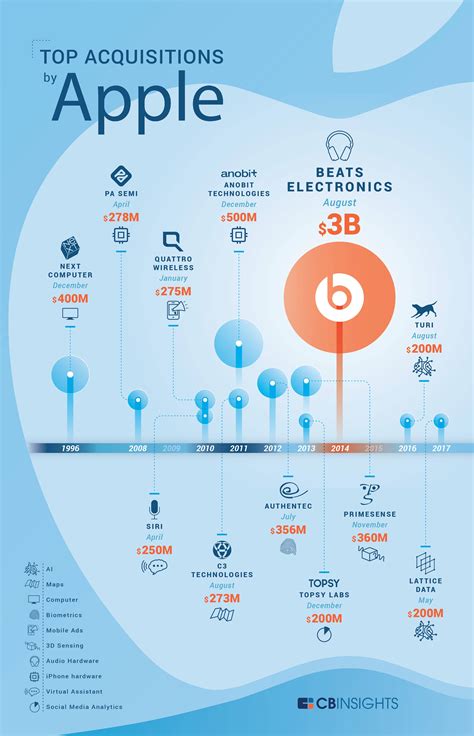
Explore how Apple’s strategic partnerships and acquisitions drive innovation and growth. Learn about key partnerships, significant acquisitions, and future trends in this blog post.In the ever-evolving tech industry, strategic partnerships and acquisitions play a crucial role in shaping a company’s trajectory. For a powerhouse like Apple, these alliances and mergers are key to maintaining its position as an innovator and market leader. In this blog post, we will explore the significance of strategic partnerships and acquisitions for Apple. We’ll define these terms and delve into the key strategic partnerships that have been instrumental in Apple’s success. We’ll also examine the impact of these partnerships on Apple’s innovative products and services. Additionally, we’ll take a closer look at some of Apple’s significant acquisitions and how these companies have been integrated into the Apple ecosystem. Finally, we’ll discuss future trends in Apple’s strategic partnerships and acquisitions, providing insight into the company’s direction in the years to come. Join us as we unravel the web of strategic partnerships and acquisitions that have shaped Apple’s success.
Contents

Strategic partnerships are collaborations between two or more businesses to achieve mutually beneficial goals. These partnerships can involve a variety of activities, such as joint marketing efforts, co-development of products or services, or sharing of resources and expertise. By forming strategic partnerships, companies can often gain access to new markets, technologies, and customer bases that they would not be able to reach on their own.
Acquisitions refer to the process of one company purchasing another company, usually with the goal of gaining access to new technology, products, or market share. Acquisitions can also be a way for a company to eliminate competition, improve their operational efficiency, or expand their overall business portfolio.
In today’s fast-paced and competitive business environment, both strategic partnerships and acquisitions are important tools for companies looking to maintain a competitive edge and drive growth. These collaborations and acquisitions can provide companies with the resources, expertise, and market presence needed to stay ahead of the competition and continue to innovate in their respective industries.
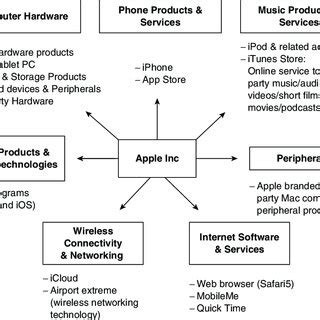
Strategic partnerships play a vital role in the success of a company, especially in the technology industry. For Apple, strategic partnerships have been crucial in expanding its product offerings and enhancing its ecosystem. One of the key strategic partnerships for Apple is with Microsoft. The collaboration between the two tech giants has resulted in the integration of Microsoft Office suite with Apple’s products, making it easier for users to access and work on documents across different devices.
Another significant partnership for Apple is with IBM. This alliance has focused on developing enterprise-focused applications for iOS devices, catering to the business needs of its customers. Through this partnership, Apple has been able to penetrate the enterprise market and provide solutions tailored to the needs of corporate clients.
Furthermore, Apple’s partnership with Intel has been essential in ensuring the supply of high-quality processors for its range of devices. This collaboration has enabled Apple to deliver efficient and powerful devices to its customers, enhancing the overall user experience.
In addition to these partnerships, Apple has also formed alliances with various other companies such as Samsung, LG, and Sony to source components and technologies for its products, ensuring a steady supply of high-quality components for its devices.
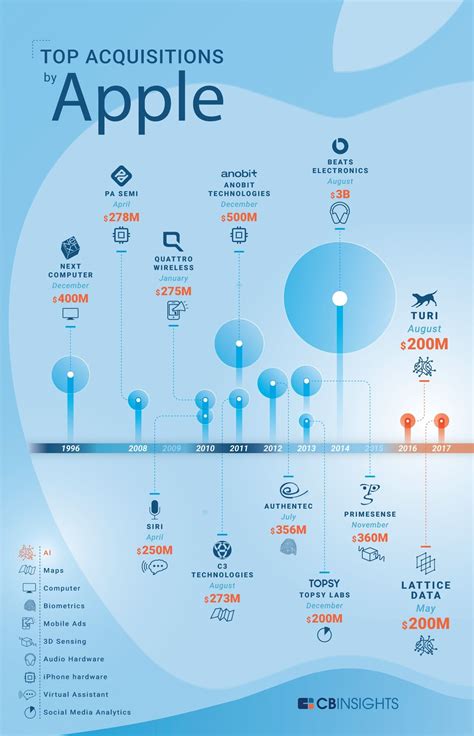
Impact of Strategic Partnerships on Apple’s Innovation
Strategic partnerships play a significant role in fostering innovation within Apple. By collaborating with other industry leaders, Apple is able to leverage the expertise and resources of its partners to drive innovation across its product portfolio. These partnerships enable Apple to access new technologies, expand its market reach, and develop innovative solutions that meet the evolving needs of consumers.
One of the key examples of how strategic partnerships have impacted Apple’s innovation is its collaboration with Intel. The partnership between Apple and Intel has allowed the tech giant to integrate Intel’s processors into its Mac lineup, enhancing the performance and capabilities of its devices. This collaboration has enabled Apple to deliver cutting-edge technology to its customers, driving innovation in the personal computing space.
Additionally, Apple’s strategic partnerships with companies such as IBM and Cisco have contributed to the development of enterprise-focused solutions, fueling innovation in the business technology sector. By working closely with these industry leaders, Apple has been able to create innovative offerings tailored to the needs of businesses, driving digital transformation and technological advancement in the enterprise space.
| Partner | Impact on Innovation |
|---|---|
| Intel | Enhanced performance in Mac lineup |
| IBM & Cisco | Development of enterprise-focused solutions |
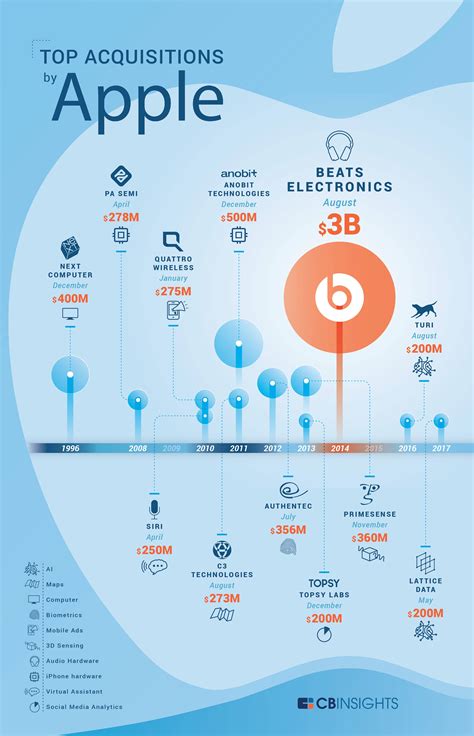
Apple has made a number of significant acquisitions over the years that have played a key role in shaping the company’s success in the tech industry. One of the most notable acquisitions was the purchase of Beats Electronics in 2014 for $3 billion. This acquisition allowed Apple to enter the music streaming market and leverage Beats‘ popular brand and technology.
Another important acquisition was NeXT in 1997, which brought Steve Jobs back to the company and laid the foundation for the modern Mac OS X operating system. This acquisition ultimately played a crucial role in reviving Apple from near bankruptcy and setting the stage for its future success.
In 2015, Apple acquired Metaio, a German Augmented Reality company, signaling the company’s interest in the growing AR market. This acquisition has since led to the development of ARKit, Apple‘s AR development platform that has been integrated into various iOS apps and features.
Additionally, the acquisition of Shazam in 2018 further expanded Apple‘s foothold in the music industry and enhanced the user experience of Apple Music and other related services. These significant acquisitions have not only bolstered Apple‘s product offerings but also accelerated its technological innovation and market competitiveness.
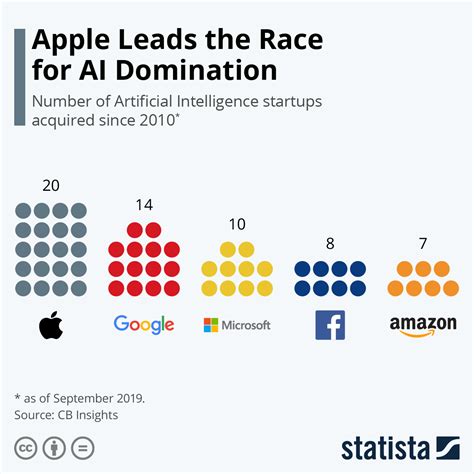
When Apple acquires a company, it’s important to understand how the integration process works. The tech giant typically acquires companies that have innovative technology or intellectual property that can enhance its products and services. Once the acquisition is complete, the acquired company’s technology and talent are integrated into Apple’s existing teams and projects.
For example, when Apple acquired Beats Electronics in 2014, the company integrated Beats’ streaming music service into its own music platform, Apple Music. It also incorporated Beats’ audio technology into its line of headphones and speakers. This seamless integration allowed Apple to enhance its music offerings and strengthen its position in the audio market.
Another important aspect of integrating acquired companies into Apple is ensuring that the acquired talent remains motivated and productive. Apple provides resources and support to help the acquired team thrive within the larger organization. By nurturing the acquired talent, Apple can continue to drive innovation and develop new products and services.
| Key Points | Impact |
|---|---|
| Technology Integration | Enhances Apple’s products and services |
| Talent Retention | Fosters innovation and creativity |
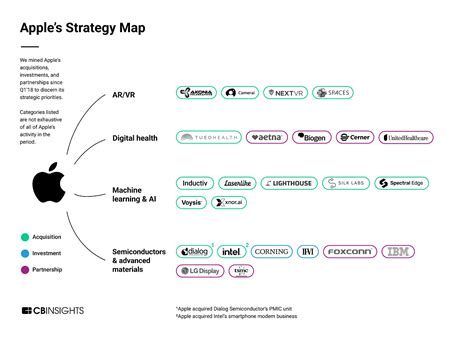
As Apple continues to dominate the tech industry, it’s important to look at the future trends in their strategic partnerships. One trend that is likely to continue is the focus on collaborating with other companies to expand their services and improve their products. By working with companies that specialize in different areas, Apple can create more innovative and competitive products that meet the evolving needs of consumers.
Another trend to consider is the expansion of strategic partnerships in the realm of artificial intelligence (AI) and machine learning. Apple has already made strides in this area with the acquisition of AI startups and the integration of AI technology into their products. Moving forward, we can expect to see more collaboration with AI-focused companies to further enhance the capabilities of Apple’s devices and services.
Furthermore, the rise of smart home technology presents an opportunity for Apple to form strategic partnerships with companies that specialize in home automation and smart devices. By teaming up with these companies, Apple can establish a stronger presence in the smart home market and offer a more seamless and integrated experience for consumers.
In conclusion, the future of Apple’s strategic partnerships will likely involve continued collaboration with companies across various industries, a focus on AI and machine learning, and an emphasis on smart home technology. These trends will shape the direction of Apple’s innovation and ultimately drive the company’s success in the years to come.

What are some strategic partnerships Apple has formed?
Some of Apple’s strategic partnerships include collaborating with IBM to develop business apps and working with Cisco to optimize networks for iOS devices.
Has Apple made any significant acquisitions in recent years?
Yes, Apple has acquired several companies, such as Beats Electronics, Shazam, and Texture, to enhance its music, media, and content offerings.
How do Apple’s partnerships and acquisitions contribute to its overall business strategy?
Apple’s partnerships and acquisitions help it expand its ecosystem, improve product offerings, and strengthen its position in various industries.
What was the impact of the Apple-IBM partnership on the market?
The partnership between Apple and IBM led to the development of industry-specific apps, boosting both companies’ positions in the enterprise mobility market.
What are some benefits of Apple’s acquisition of Beats Electronics?
The acquisition of Beats Electronics allowed Apple to enter the premium headphones market and bolster its music streaming service, Apple Music.
How has Apple’s collaboration with Cisco benefited businesses?
The collaboration with Cisco has resulted in better network performance for iOS devices, addressing the connectivity needs of enterprise users.
What can we expect from Apple’s future partnerships and acquisitions?
Apple is likely to continue forming strategic partnerships and making targeted acquisitions to strengthen its ecosystem and expand into new markets.